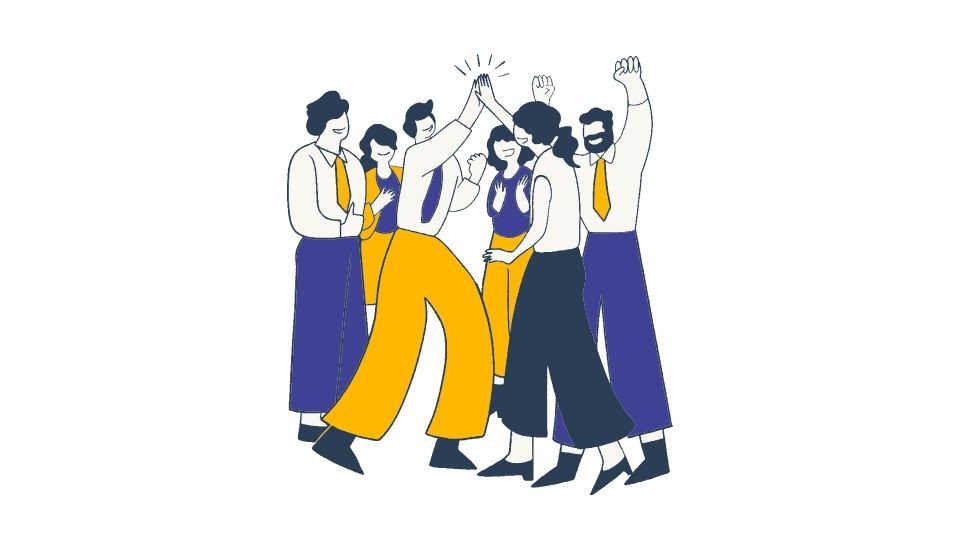Ever wondered how to start a movement without being rich, famous, or powerful?
That’s exactly what grassroots campaigning is all about. It’s regular people (like you and me) banding together to create change from the ground up.
No fancy politicians. No billionaire donors. Just passionate citizens rolling up their sleeves and getting to work.
I’ve always been fascinated by how ordinary folks can accomplish extraordinary things when they work together. So let’s dive into what grassroots campaigning is, why it matters, and how to do it effectively.

What Is Grassroots Campaigning (And Why Should You Care)?
Grassroots campaigning is political or social activism driven by regular people in communities working together for change. Unlike top-down approaches where politicians or elites call the shots, grassroots campaigns harness the power of everyday citizens to influence public opinion and policy through collective action.
Think of it like this: Instead of waiting for people in power to solve problems, communities take matters into their own hands through:
- Community meetings
- Petition drives
- Protests and rallies
- Door-to-door conversations
- Phone banking
- Social media campaigns
What makes a campaign truly “grassroots”? A few key things:
- Bottom-up organization – Leadership comes from within the community, not from established political figures
- Local engagement – It starts with neighbors talking to neighbors about issues that directly affect them
- People power over money power – Volunteers and passion drive these movements, not big budgets
- Direct, personal connection – Face-to-face conversations and storytelling build authentic relationships
- DIY spirit – Creative problem-solving with whatever resources are available
Famous Grassroots Movements That Changed History

Some of the most powerful movements in history started with just a handful of determined citizens:
The Civil Rights Movement wasn’t just Martin Luther King Jr. giving speeches. It was thousands of ordinary Black Americans and allies organizing boycotts, sit-ins, and marches that eventually led to landmark legislation like the Civil Rights Act and Voting Rights Act. Rosa Parks wasn’t a professional activist – she was a seamstress who refused to give up her seat and sparked a movement.
The Landmine Ban Campaign in the 1990s united everyday citizens worldwide to push for the 1997 Ottawa Treaty banning antipersonnel landmines. The campaign won a Nobel Peace Prize and has saved countless lives.
The Sunrise Movement shows the power of youth-led grassroots organizing around climate justice. Starting with just a handful of committed young people, they’ve built a nationwide movement advocating for the Green New Deal and climate action through local chapters and digital organizing.
The Arab Spring demonstrated how social media can supercharge grassroots organizing, as citizens across the Middle East and North Africa used platforms like Twitter and Facebook to coordinate protests against authoritarian regimes.
Why Grassroots Campaigning Matters Now More Than Ever
In an age of political polarization and institutional distrust, grassroots campaigns are vital because they:
Empower regular people to participate in democracy beyond just voting every few years. When you join a grassroots campaign, you’re not just complaining about problems – you’re actively working to solve them.
Increase accountability by forcing politicians and institutions to listen to voices they might otherwise ignore. When enough citizens speak up, even the most powerful have to pay attention.
Raise awareness about issues that mainstream media and politicians might overlook. Grassroots campaigns have put countless important issues on the national agenda that would have otherwise remained invisible.
How To Run A Kick-Ass Grassroots Campaign

Want to start or join a grassroots movement? Here’s what experts say works:
1. Craft a message that hits home
Your campaign needs a clear, compelling message that resonates deeply with people’s lived experiences. Make it simple, emotional, and actionable.
For example, don’t say: “We need to reform transportation policy to reduce carbon emissions by 30% by 2030.”
Instead say: “Our kids deserve clean air to breathe. Let’s build safer bike lanes in our neighborhood now.”
2. Build your people power
A grassroots campaign lives or dies by its volunteers. Focus on:
- Recruitment – Ask everyone to bring a friend to the next meeting
- Training – Equip volunteers with skills and knowledge
- Retention – Make participation rewarding and recognize contributions
- Leadership development – Help promising volunteers take on more responsibility
The Movement for Black Lives has excelled at building distributed leadership, with local chapters leading campaigns while maintaining connection to the broader movement.
3. Use every channel available
Effective grassroots campaigns combine:
- In-person organizing – Door-knocking, community meetings, rallies
- Digital organizing – Social media, email campaigns, text banking
- Traditional media – Press releases, op-eds, interviews
- Creative tactics – Art, music, street theater, and other attention-grabbing approaches
The key is meeting people where they are. Some folks will never join a protest but might sign an online petition. Others might not be on social media but will show up to a community potluck.
4. Build relationships (not just a movement)
The strongest grassroots campaigns create genuine human connections:
- With allies – Find organizations working on related issues
- With influencers – Engage local leaders who can amplify your message
- With decision-makers – Develop relationships with politicians, not just demands
- Within the community – Create spaces for people to connect beyond the campaign
The Sunrise Movement uses “movement houses” where activists live together, building deep bonds while working on campaigns.
5. Be persistent and adaptable
Change rarely happens overnight. Successful grassroots campaigns:
- Track progress meticulously
- Celebrate small wins to maintain momentum
- Adapt tactics based on what’s working
- Plan for the long haul with sustainable practices to prevent burnout
The movement to legalize marijuana took decades of grassroots advocacy before achieving recent breakthroughs in state laws.
Common Grassroots Tactics That Get Results

Here are some tried-and-true approaches that grassroots campaigns use:
House meetings – Gather neighbors in someone’s living room to discuss issues and plan action. The intimate setting builds trust and commitment.
Public demonstrations – Rallies, marches, and protests create visibility and demonstrate people power. They can generate media coverage and pressure decision-makers.
Petition drives – Collecting signatures shows broad support and helps identify potential volunteers. Online platforms like Change.org have made this easier than ever.
Phone/text/letter campaigns – Flooding officials’ offices with calls, texts, or letters on a specific day can be incredibly effective. It’s hard to ignore hundreds of constituents demanding action!
Voter registration and GOTV – Registering voters and getting out the vote can transform the political landscape. Many grassroots groups focus on these fundamentals of democracy.
The Challenges (Let’s Be Real)

Grassroots organizing isn’t easy. You’ll likely face:
Limited resources – You probably won’t have much money. Get creative with what you have and focus on people power.
Volunteer burnout – People have jobs, families, and other commitments. Create sustainable roles and practice community care.
Powerful opposition – You might be up against well-funded interests. Use your authenticity and moral authority to counter their money.
Slow progress – Change often happens gradually. Celebrate small wins and keep your eyes on the long-term goal.
But here’s the thing – these challenges are exactly why grassroots campaigns matter so much. When regular people overcome these obstacles to create change, it proves democracy can still work from the bottom up.
In Summary
Grassroots campaigning is about everyday people coming together to create the change they want to see. It’s messy, challenging, and often slow – but it’s also one of the most powerful forces for positive change in our world.
Whether you’re concerned about climate change, racial justice, education, or any other issue, getting involved in (or starting) a grassroots campaign is one of the most meaningful ways to make a difference.
The next time someone says “but what can one person really do?” – remember that every major social movement in history started with a small group of committed citizens who refused to accept the status quo.
That could be you and your neighbors. That could be us.




